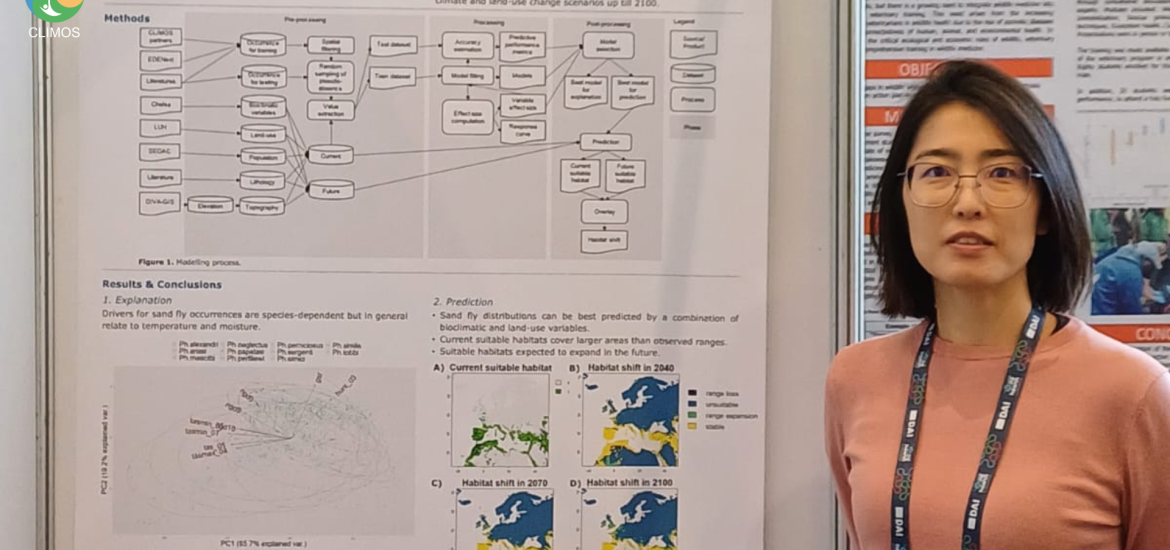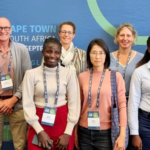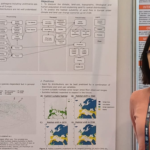Danyang Wang represented the CLIMOS project at the 8th World One Health Congress in Cape Town with her impactful poster on understanding and predicting sand fly occurrences in Europe. This event, supported by the Quadripartite Collaboration on One Health: the Food and Agriculture Organization of the United Nations (FAO), the World Organisation for Animal Health (OIE), the UN Environment Programme (UNEP) and the World Health Organization (WHO), provided an unparalleled platform for global collaboration on critical health issues linking humans, animals, and ecosystems.
The Congress welcomed over 1,400 participants from 87 countries, sharing the latest research and policy insights on issues such as antimicrobial resistance, climate-related health impacts, and pandemic preparedness.
Danyang’s poster, “Understanding and predicting the occurrences of Phlebotumine sand flies in and around Europe” explored factors influencing sand fly distributions, particularly climate, land use, and population density, which are essential to predicting sand fly habitat suitability under future climate scenarios. Danyang’s research targets Phlebotomine sand flies, vectors of Leishmania spp., which are predicted to expand across Europe. Her objectives included identifying climate, land use, topography, lithology, and population density as key drivers of sand fly distribution. The findings highlighted temperature and moisture as major influences, with predictions indicating that suitable habitats for sand flies are expected to expand by 2100 due to climate change. These insights are critical as sand fly-borne diseases, including Leishmania, are predicted to spread in Europe, heightening the need for robust early warning systems like CLIMOS.
With over 600 posters, 400 speakers, and diverse interdisciplinary sessions, the Congress fostered innovative solutions to global health challenges. CLIMOS’s participation strengthens its commitment to addressing vector-borne diseases, aligning with One Health goals to protect public health against emerging threats in a changing world.



